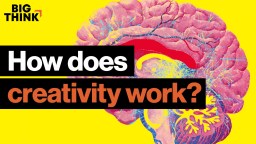Our crisis of attention: is it digital?

- People throughout history have been distracted. There is nothing uniquely distracting about modern technology.
- We are suffering from a crisis of attention because we don’t allow ourselves a mental break.
- In particular, we no longer daydream, which is a beneficial type of spontaneous thought.
The following is excerpted from PEAK MIND by Amishi P. Jha. Reprinted with permission from HarperOne, an imprint of HarperCollins Publishers. Copyright 2021.
We’re bombarded by the idea that at the root of our attention issues lies a single powerful culprit: modern technology. If we truly want to focus, it seems, we need to turn off all our devices, quit social media, and retreat into the woods for a digital detox.
Here’s my resistance to that idea. At an elemental level, this particular era is no different than any other — there has always been a “crisis of attention.” Historically, people have turned to meditation (and other forms of contemplative practice) to deal with feelings of being overwhelmed and scattered in focus, and to refocus and reflect on priorities — our inner values, intentions, purpose. This can certainly be a spiritual process, if that’s how you define it. But we’re discovering that mindfulness impacts the attention system and how it copes with the distractions that surround us — and those that are generated internally. In part, that’s what meditation practitioners have always been pursuing. Think about life long ago: people in ancient India or medieval Europe didn’t have smartphones and Facebook, but they were still suffering in their own minds. They still turned to any number of practices for relief. They still described the same challenge: I’m not fully present for my life.
A crisis of attention can happen anytime you don’t allow yourself a break — when you don’t allow your mind to “rest” without having any task-at-hand. Remember our distinction between mind-wandering (having off-task thoughts during a task) and daydreaming (task-free spontaneous thought and opportunity for conscious reflection, creativity, and the like)? Well, one problem today is that we are always engaged in something. With these digital tools at our fingertips, we have constant access to all these forms of communication, content, and interaction, and we don’t tend to gravitate toward letting our thoughts meander, unconstrained. Of the two types of spontaneous thought we discussed earlier, it’s the beneficial type — the daydreaming — that we barely get at all. When was the last time you stood in line at a store and just… looked around? Thought about whatever surfaced in your mind? Or did you pull out your phone, check your texts, read your email?
We all do it. I catch myself all the time, going from one type of mental engagement to the next. I call it hypertasking. Like surfing hyperlinks online (clicking from link to link as they grab your attention), we go from one task to the next and the next. You are probably doing it right now. We are “all task and no downtime.” And we’re asking an enormous amount — too much — from our attention systems. Your attentional capacity is not less than someone’s from hundreds of years ago. It’s only that right now, you’re using your attention in a particular focused way, all the time. We’re taxing our focused attention to the max. Hypertasking is hyper-taxing! Even something you might think of as relaxing (scrolling through Instagram, for example, or reading an article someone shared) is more engagement. It’s another task. Checking your notifications may seem “fun,” but it’s work for your attention. Task: check to see who posted what in response to my post. Task: check how many likes I got. Task: check who shared my funny meme. Your attention was focused on task after task after task, with no attentional downtime, not a moment for the mind to roam free.
It’s not always realistic to unplug. We can’t just turn off our phones and pause our email. We cannot create a distraction-free world. The issue is not the existence of this technology; rather, it’s how we’re using it: we are not allowing our minds to pay attention differently. And this is where mindfulness comes in, as a way to steady your flashlight so you don’t end up swinging it around at any and all possible distractions — digital or not.





